Tube-End Coating
Discussion
Copper based alloys may erode within the first foot or so of the inlet end. Other tube materials may deteriorate because of galvanic or microbiological issues.
Inlet-end erosion is generally due to turbulence present at the tube inlet before laminar flow is established. The degree of erosion depends on the nature and amount of entrained solids in the cooling water and flow velocities. Micro and macrofouling of tube surfaces may also contribute to selective tube deterioration.
Oulet-end erosion may also occur due to outlet flow induced turbulences such as cavitation.
The Plastocor® Tube-End Coating is precisely applied in three coats of alternating colors. The 100% solids, high performance epoxy coating can be installed to any depth and is performed in conjunction with the Tubesheet Cladding so as to confer maximum protection. Each coat is approximately 2 to 3 mils thick and is applied further down the tube than the previous coat.
Our three coat method creates a feathered termination, eliminating the chance of step-erosion, a problem that can exist with plastic or metal inserts. This method can also bridge small perforations of the tube wall.
The joining of the tubesheet cladding with the inlet coating creates a uniform and smooth transition from waterbox to tube. This reduces fouling and turbulence which raises flow efficiencies. The tube ID is not significantly reduced which permits the unrestricted use of eddy current testing and most tube cleaning methods. The Plastocor® Tube-End Coating can indefinitely protect condenser tubes against inlet end erosion.
In those cases when the tube-end has eroded to the point where structural integrity has been lost or is threatened, a metal insert can be incorporated into the coating to bridge between the tube and the tubesheet and restore integrity.
Examples of Deteriorated Tube-ends which have been restored with Plastocor
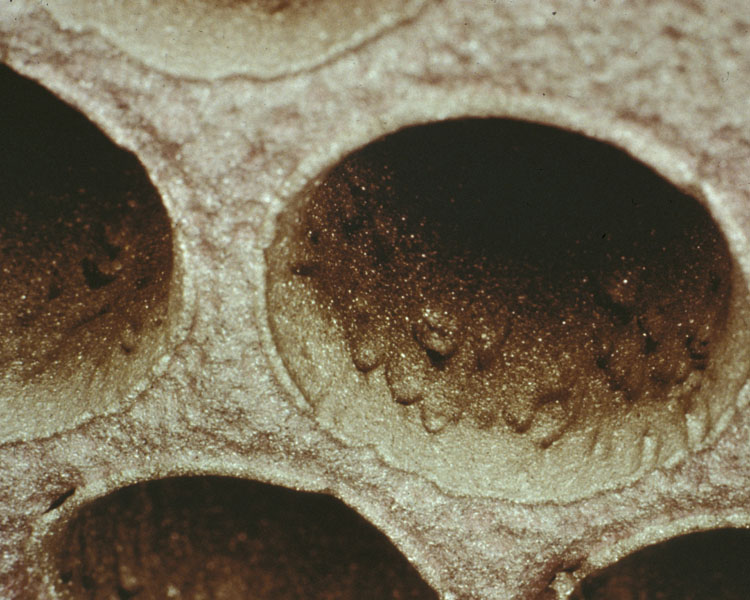
After ten years in service these Admiralty condenser tubes were thinning due to turbulence at the inlet-end. The tubesheets were epoxy clad and an tube ID coating installed in 1991.
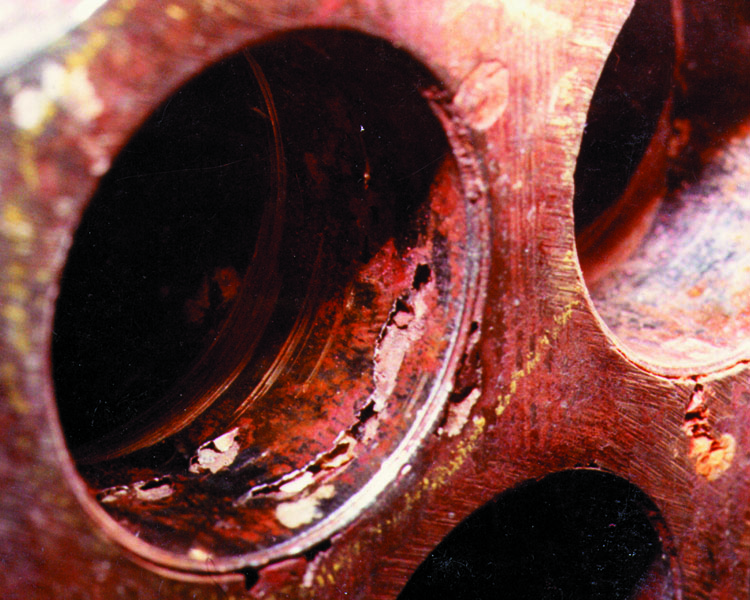
This 316 tubesheet with 29-4C tubes suffered galvanic and microbiological induced corrosion (MIC) causing corrosion in the tubesheet which eventually resulted in perforation of the tubes from the OD in. The tubesheets were clad and the tube IDs coated in 1994.

Erosion and impingement damage to Muntz Metal tubesheet with Admiralty tubes.
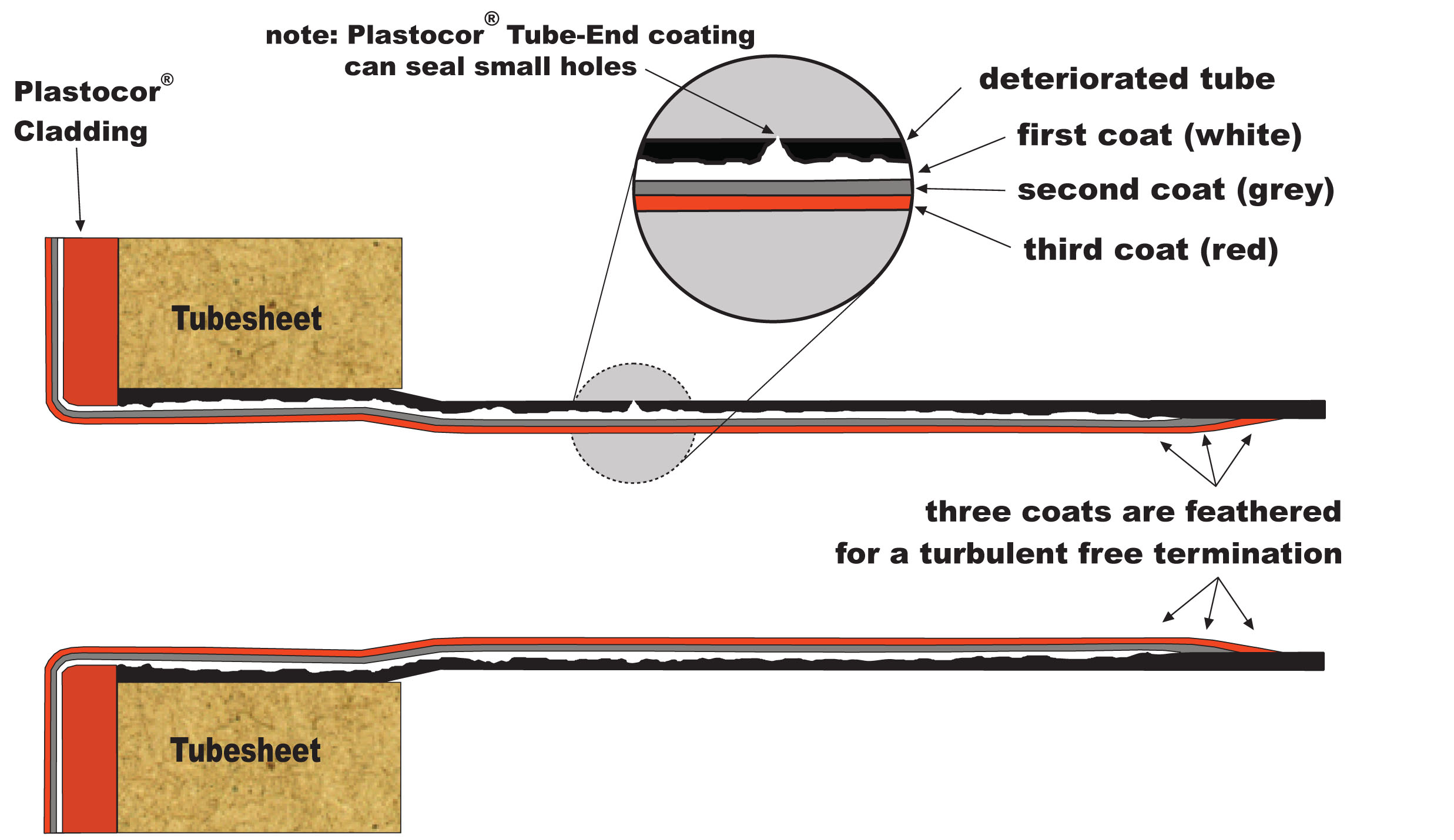
Tube-Ends Coated with Plastocor

Here the first coat (white) is being applied after the tubesheet Cladding has been installed.
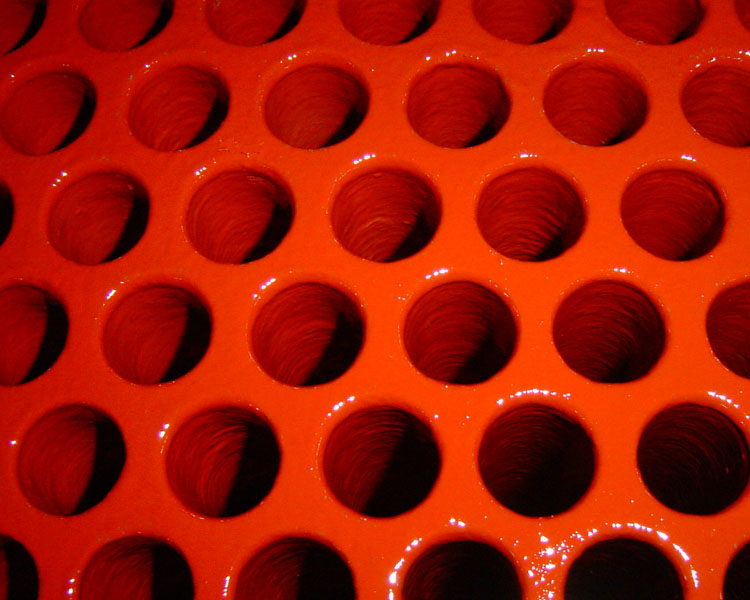
Final product.
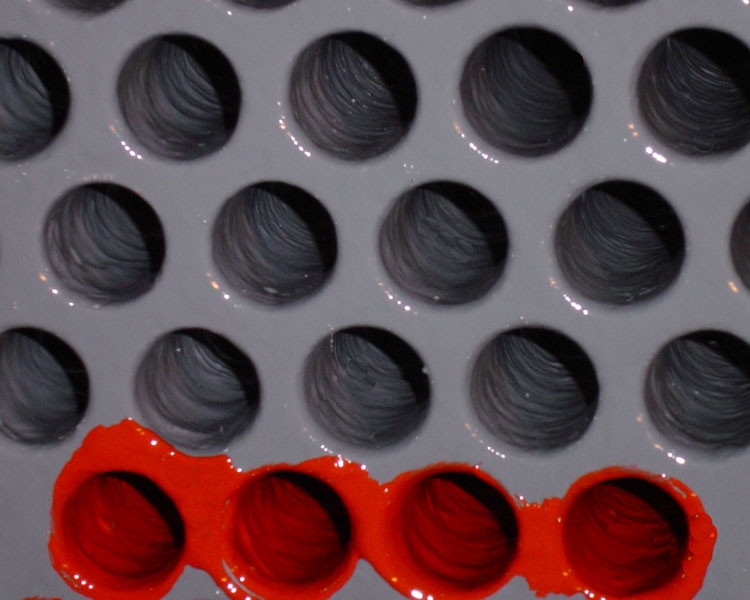
Here the second tube-end coat (gray) has been applied and the final coat (red) has begun.
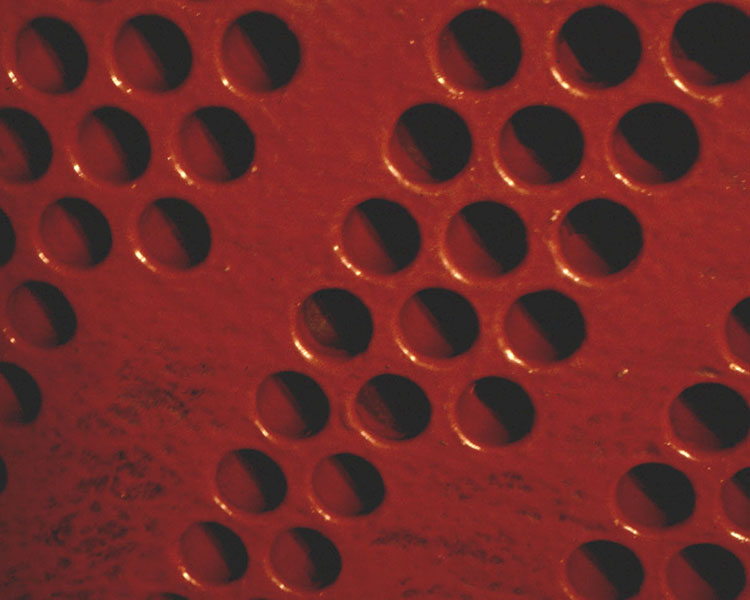
Condenser Inlet tube-end coating after five years service.
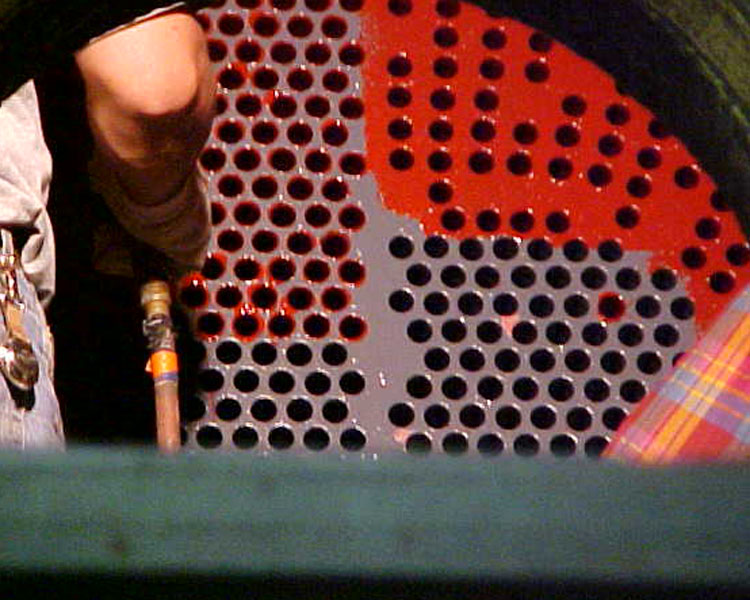
Work in Progress.

Hydrogen cooler with tubesheet cladding and inlet-end tube coating.
